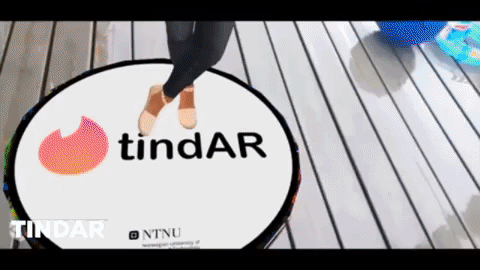Swipe Right on 3D: TindAR & The Future of Dating Apps
In recent years, Augmented Reality (AR) has significantly grown in popularity, permeating various industries and altering the way we interact with technology. With the emergence of powerful devices equipped with Lidar (Light Detection and Ranging) technology, a new dimension of possibilities has surfaced for AR applications. One such concept is TindAR, an AR dating experience that employs lidar-scanned 3D models for future Tinder applications. This blog post delves into the design, development, and potential impact of TindAR and how it can revolutionize how we form connections with others.
Lidar technology utilizes lasers to measure distance and generate highly accurate 3D models of real-world environments. By leveraging this technology, TindAR infuses a new perspective into the traditional Tinder experience. Rather than relying solely on 2D images and text descriptions, users can now interact with realistic 3D representations of potential matches, fostering better connections between individuals.
The TindAR Experience
User Interface and User Experience (UI/UX) design is paramount in creating a seamless and engaging experience for TindAR users. The interface should be intuitive and user-friendly, guiding individuals to navigate through profiles and interact with 3D models effortlessly.
TindAR's integration of lidar-scanned 3D models offers several advantages over traditional dating platforms. It provides a more accurate representation of a person's appearance, enabling users to get a better sense of their physical features and presence. This diminishes the likelihood of misrepresentation or catfishing, as users can make informed decisions based on realistic representations.
Overcoming Challenges
While TindAR provides exciting possibilities, it also presents unique challenges. One of the key hurdles is ensuring the accuracy and fidelity of the lidar-scanned 3D models, requiring robust algorithms and sophisticated machine-learning techniques.
Moreover, privacy and security concerns must be meticulously addressed. As TindAR relies on real-time scanning of individuals, ensuring user consent, data protection, and preventing misuse of the 3D models becomes paramount. Implementing stringent privacy measures and encryption protocols will be crucial in gaining user trust and fostering a safe environment.
Conclusion
TindAR, an AR concept that integrates lidar-scanned 3D models into future Tinder applications, has the potential to revolutionize the dating scene. However, its successful implementation will require overcoming significant challenges, especially ensuring accuracy, privacy, and security. Nonetheless, with a thoughtful design, robust algorithms, and stringent security measures, TindAR could redefine how we connect with others in the digital age.
#augmentedreality #prototype #vuforia #unity #gonzoresearch #attilabekkvikszentirmai
